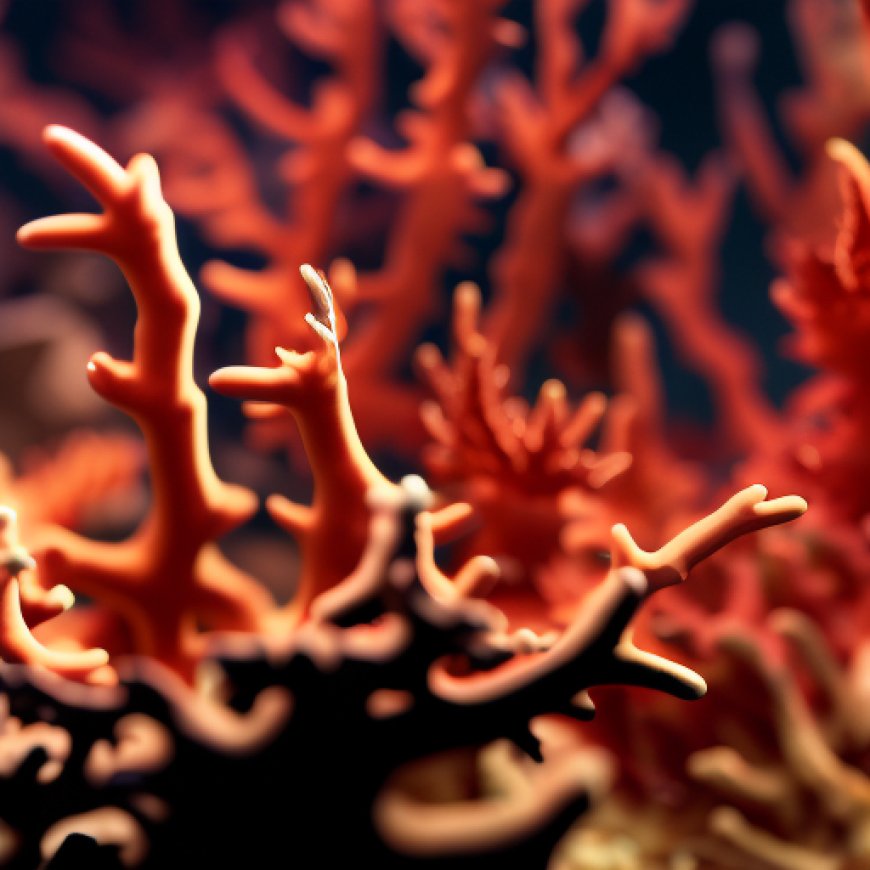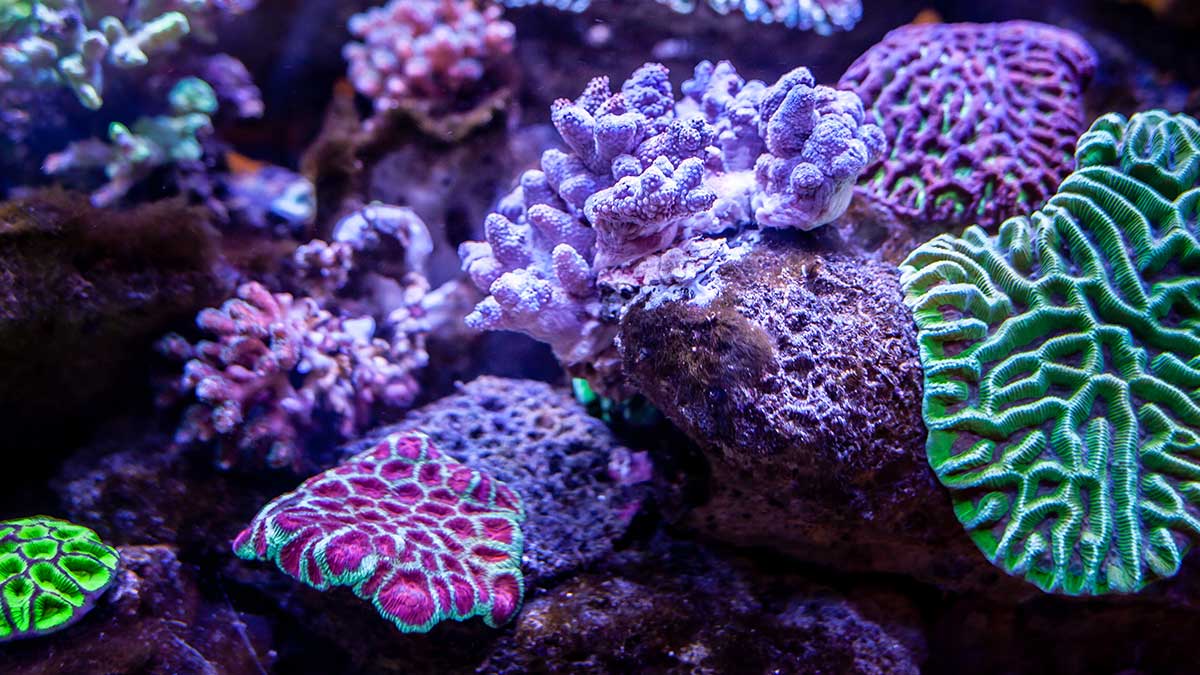Coral Under Siege: Action You Can Take As Reefs Bleach
Coral Under Siege: Action You Can Take As Reefs Bleach Earth911.com


The Worst Coral Bleaching Event in Recorded History

The summer of 2024 will see the worst coral bleaching event in recorded history. Critical to marine biodiversity and coastal protection, reefs are threatened by coral bleaching driven by warmer waters due to climate change and other human activities.
“Bleaching” refers to the loss of color in coral. The colorful half of the biological partnership that gives coral its diverse color, a type of algae known as zooxanthellae, is killed by warming water temperatures. Zooxanthellae process food for the coral; when lost, most corals die off. When coral expels zooxanthellae in response to higher temperatures, the reef-building process ends, and the populations of many other species dependent on the reefs collapse.
It’s too late to prevent this year’s coral disaster. As responsible global citizens, we can take meaningful actions to reduce the temperature of the oceans over them and help preserve these vital ecosystems.
Actions to Reduce Coral Bleaching
Reduce Your Carbon Footprint: Climate change is the primary driver of coral bleaching. By reducing our carbon footprint, we can help mitigate its impact. Simple daily choices like carpooling, using public transportation, and reducing energy consumption at home and work can make a significant difference. Choosing energy-efficient appliances and minimizing heating and air conditioning can also contribute to lower carbon emissions. Ocean temperatures will take decades, if not centuries, to fall, as 91 percent of the heat added to the planet’s ecosystems is stored in the sea.
Practice Responsible Tourism: When visiting coral reefs or just spending time at the beach, practice responsible tourism. Choose reef-friendly sunscreens that do not contain harmful chemicals, avoid physical contact with reefs while diving or snorkeling, and do not remove any coral from the reefs.
Support Sustainable Fisheries: Overfishing and harmful fishing practices damage coral ecosystems. Opting for sustainable seafood can encourage better practices and help maintain balanced marine environments.
Waste Management: What you do at home makes a difference, too. Proper waste disposal and reducing plastic use are essential to protecting oceans from pollution, which significantly impacts coral reefs. Participating in beach clean-ups and recycling can prevent waste from reaching the sea.
Think Water Quality In The Backyard: Using fewer fertilizers and pesticides can reduce runoff that harms coral reefs. Installing rain barrels and creating rain gardens can also help manage stormwater and reduce pollutants entering water systems.
Education and Advocacy: Teaching yourself and others about the importance of coral reefs and their threats can lead to more informed decisions at the community and policy levels. Advocacy for environmental policies that protect coral reefs is also crucial.
Support Coral Research and Conservation Programs
Contributing to organizations that conduct coral research and engage in conservation activities can help fund the science needed to understand and combat coral bleaching. The National Oceanic and Atmospheric Administration’s Coral Watch program is a great place to start exploring the global coral crisis.
An emerging area of hope is coral restoration, which includes programs that cultivate coral reefs and, in some cases, work to modify corals and zooxanthellae to survive rising water temperatures genetically. Cora Vita, a social benefit company, has launched a restoration project in The Bahamas. Listen to an interview with Coral Vita cofounder Sam Tiecher to learn more.
By incorporating these actions into our daily lives, we can each contribute to coral reefs’ health and longevity, helping them continue to thrive for future generations. Each small step adds up to a significant impact in the fight against coral bleaching and the preservation of marine biodiversity.
SDGs, Targets, and Indicators
-
SDG 13: Climate Action
- Target 13.3: Improve education, awareness-raising, and human and institutional capacity on climate change mitigation, adaptation, impact reduction, and early warning
- Indicator 13.3.1: Number of countries that have integrated mitigation, adaptation, impact reduction, and early warning into primary, secondary, and tertiary curricula
-
SDG 14: Life Below Water
- Target 14.2: Sustainably manage and protect marine and coastal ecosystems to avoid significant adverse impacts, including by strengthening their resilience and taking action for their restoration in order to achieve healthy and productive oceans
- Indicator 14.2.1: Proportion of national exclusive economic zones managed using ecosystem-based approaches
- Indicator 14.2.2: Progress by countries in the degree of implementation of international instruments aiming to combat illegal, unreported, and unregulated fishing
-
SDG 15: Life on Land
- Target 15.1: By 2020, ensure the conservation, restoration, and sustainable use of terrestrial and inland freshwater ecosystems and their services, in particular forests, wetlands, mountains, and drylands, in line with obligations under international agreements
- Indicator 15.1.1: Forest area as a proportion of total land area
- Indicator 15.1.2: Proportion of important sites for terrestrial and freshwater biodiversity that are covered by protected areas, by ecosystem type
Table: SDGs, Targets, and Indicators
| SDGs | Targets | Indicators | |
|---|---|---|---|
| SDG 13: Climate Action | Target 13.3: Improve education, awareness-raising, and human and institutional capacity on climate change mitigation, adaptation, impact reduction, and early warning | Indicator 13.3.1: Number of countries that have integrated mitigation, adaptation, impact reduction, and early warning into primary, secondary, and tertiary curricula | |
| SDG 14: Life Below Water | Target 14.2: Sustainably manage and protect marine and coastal ecosystems to avoid significant adverse impacts, including by strengthening their resilience and taking action for their restoration in order to achieve healthy and productive oceans | Indicator 14.2.1: Proportion of national exclusive economic zones managed using ecosystem-based approaches | Indicator 14.2.2: Progress by countries in the degree of implementation of international instruments aiming to combat illegal, unreported, and unregulated fishing |
| SDG 15: Life on Land | Target 15.1: By 2020, ensure the conservation, restoration, and sustainable use of terrestrial and inland freshwater ecosystems and their services, in particular forests, wetlands, mountains, and drylands, in line with obligations under international agreements | Indicator 15.1.1: Forest area as a proportion of total land area | Indicator 15.1.2: Proportion of important sites for terrestrial and freshwater biodiversity that are covered by protected areas, by ecosystem type |
Analysis
-
SDG 13: Climate Action
The article highlights the connection between coral bleaching and climate change, which is the primary driver of coral bleaching. By reducing our carbon footprint, we can mitigate the impact of climate change on coral reefs.
The specific target under this SDG that can be identified is Target 13.3: Improve education, awareness-raising, and human and institutional capacity on climate change mitigation, adaptation, impact reduction, and early warning. This target emphasizes the importance of educating and raising awareness about climate change and its impacts.
The article does not mention any specific indicators related to this target.
-
SDG 14: Life Below Water
The article discusses the importance of protecting marine and coastal ecosystems, including coral reefs, to avoid significant adverse impacts. It also mentions the need to support sustainable fisheries to maintain balanced marine environments.
The specific targets under this SDG that can be identified are Target 14.2: Sustainably manage and protect marine and coastal ecosystems to avoid significant adverse impacts, including by strengthening their resilience and taking action for their restoration in order to achieve healthy and productive oceans.
The article mentions two indicators related to this target. Indicator 14.2.1 measures the proportion of national exclusive economic zones managed using ecosystem-based approaches, which is relevant to the sustainable management of marine and coastal ecosystems. Indicator 14.2.2 measures the progress by countries in the degree of implementation of international instruments aiming to combat illegal, unreported, and unregulated fishing, which is important for protecting marine biodiversity.
-
SDG 15: Life on Land
The article emphasizes the importance of conserving and restoring terrestrial and inland freshwater ecosystems, including forests and wetlands, to protect coral reefs. It also mentions the need to reduce runoff from fertilizers and pesticides that harm coral reefs.
The specific target under this SDG that can be identified is Target 15.1: By 2020, ensure the conservation, restoration, and sustainable use of terrestrial and inland freshwater ecosystems and their services, in particular forests, wetlands, mountains, and drylands, in line with obligations under international agreements.
The article mentions two indicators related to this target. Indicator 15.1.1 measures the forest area as a proportion of total land area, which is relevant to the conservation of terrestrial ecosystems. Indicator 15.1.2 measures the proportion of important sites for terrestrial and freshwater biodiversity that are covered by protected areas, by ecosystem type, which is important for preserving biodiversity.
Copyright: Dive into this article, curated with care by SDG Investors Inc. Our advanced AI technology searches through vast amounts of data to spotlight how we are all moving forward with the Sustainable Development Goals. While we own the rights to this content, we invite you to share it to help spread knowledge and spark action on the SDGs.
Fuente: earth911.com

Join us, as fellow seekers of change, on a transformative journey at https://sdgtalks.ai/welcome, where you can become a member and actively contribute to shaping a brighter future.







